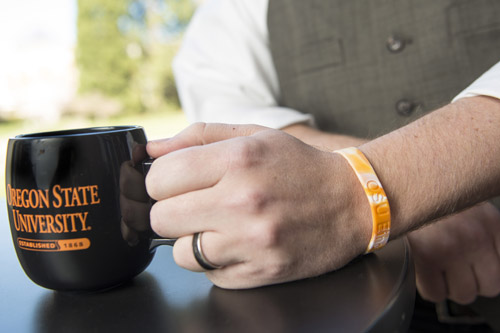BY LINDA BAKER
Remember mood rings? A team of scientists at Oregon State University has designed what might be considered a 21st-century analog of the ’70s jewelry fad: a bracelet that reveals one’s exposure to pollutants.
 BY LINDA BAKER
BY LINDA BAKER
Remember mood rings? A team of scientists at Oregon State University has designed what might be considered a 21st-century analog of the ’70s jewelry fad: a bracelet that reveals one’s exposure to pollutants. Resembling today’s popular cause-based marketing wristbands — think Livestrong — the silicone bracelets have a porous surface that mimics a cell, absorbing chemicals people are exposed to through their environment. The wristbands help researchers characterize the chemical composition of the wearer’s surroundings, which in turn should help policymakers intervene with targeted solutions, says Kim Anderson, a professor in the agricultural sciences college. In a recent experiment, 30 volunteers wore the bands for a month — and soaked up an alarming 50 chemical compounds, including traces of fragrances and other personal care products, flame retardants, pesticides, caffeine, nicotine and chemicals from pet flea medicines. The OSU team has also conducted studies on kids’ exposure to flame retardants; an ongoing project in West Africa is measuring pesticide uptake. The long-term goal is to commercialize the wristband, says Anderson, adding that she developed a prototype “passive sampler” necklace several years ago. “But not everyone wanted to wear that,” she says, “particularly the gentlemen.” To participate in a future wristband study, click here.

